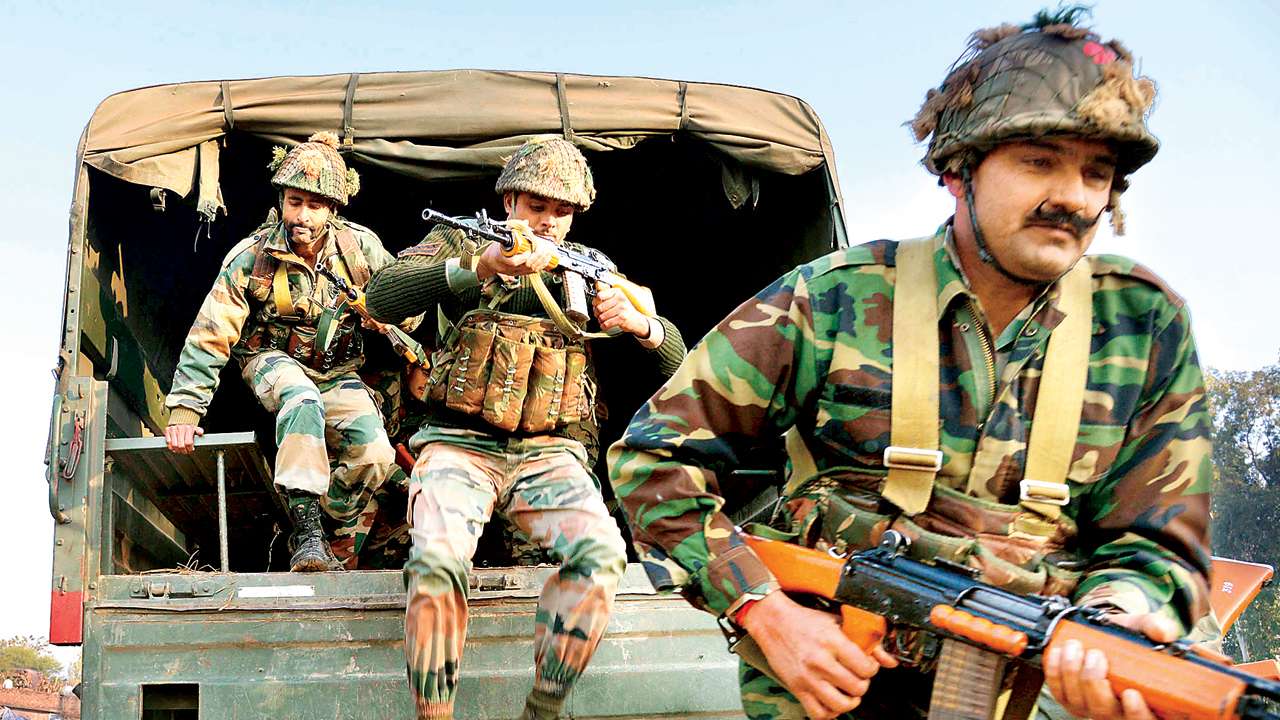
Fidayeen attacks offer psychological victory to the sagging morale of terrorists. They act as a catalyst for recruitment and reorganisation, while giving impetus to terrorists to start their operations all over again. At the same time, repeated breaches of security put a question mark on the capabilities of security forces to guard their camps that are otherwise supposed to be secure places. The myth of security and invincibility of the security forces is punctured by the success of such breaches. Terror attacks cannot be prevented but breach in the security ring can certainly be prevented by a systemic approach. It is the task of military leadership to plug these breaches in the security matrix.
Terror attacks on army camps are no more a news — they have become a new normal. The success rate of breaching the security rings of army cantonments by terrorists and even by criminals are alarmingly high. There have been numerous committees, enquiries and board of officers to strengthen the security of camps yet the success rate in breaching the fencing and boundary walls has been unacceptably high. Philip Campose report on the security of military installations had laid down comprehensive procedural and structural measures based on emerging threats. Though procedural issues were implemented to some extent since it had no financial implications, the structural security elements that included high fencing walls, perimeter intrusion alarm systems, night vision, CCTV coverage and sentry alert systems are still to be implemented. Some of these structural issues are still stuck in bureaucratic red tape and as a result, soldiers will continue to remain vulnerable.
There is no denying the fact that there has been a repeated failure in prevention of breach through the outer perimeter. Distressingly, terrorists have achieved almost 100 per cent success in breaking through the security perimeter in Jammu-Samba-Pathankot sector. Lessons learnt from previous attacks seems to be forgotten too soon and the cycle of loss of invaluable lives and cosmetic surgery starts all over again. The basic principle of Fidayeen attack is that if even one succeeds, then the enemy must be prepared to receive repeated attacks, but if the first attempt fails, then a second attack may not follow in the same area.
Preliminary recce of the camps and information of weak spots or vulnerable spots is often given by criminals or the civilians working inside the camps and some of them even use unauthorised routes. There has to be deterrence of attempting to breach security be it criminals or terrorists.
The issue is how did the terrorist reach the camp? There is a fence guarded by the Border Security Force, state and national intelligence agencies operating round the clock, police pickets and finally the cantonment perimeter security. Thus the terrorists managed to defeat multiple agencies and numerous tiers of security rings before hitting the army base. Thus it is a collective failure of all agencies that failed to detect the movement of terrorists.
The problem does not lie in capabilities but in accountability. All agencies responsible for securing the bases operate under different establishments. Border guarding forces and the Intelligence Bureau operates under MHA, police, while the state CID under state government and Army under MOD. Though there is informal communication between these agencies, however, none of them are accountable to each other. As a result, there is a problem of coordination and accountability. Unless the issue of coordination and accountability are fixed such attacks will continue to hurt India.
Over-reliance on human intelligence and human security is unlikely to provide a foolproof shield. Technology is expensive but there is no alternative to it. Unless cantonments are made safe, effective counter-terrorism operations will yield limited results. There are models that can forecast types of attacks and vulnerable areas based on artificial intelligence. These models can be tailored to meet the operational requirement based on the emerging threats to an installation. These models can be superimposed on intelligence to forecast and pre-empt actions. Such models will assist in putting in place protocol of precautionary measures to prevent and defeat the Fidayeen attacks.
There are only two ways of preventing such attacks in future. Impose cost on agencies responsible for it within India and in Pakistan. Maulana Masood Azhar and Hafiz Saeed have no reasons to be living. All anti-national forces in league with terrorists must meet the same fate as terrorists. Taking moral high ground to respond to unrestricted war is an excuse either for lack of capabilities or lack of will. Harden your targets and prevent exposed flanks. There is no scope for bureaucratic red tape when it comes to putting structural security in place.
Be it high perimeter walls, perimeter intruders alarms, night vision enabled CCTV grids or illumination and clearing of forest areas of fire lanes. At the same time lapses in supervision and procedural response cannot be ignored.
Heads must roll for lack of accountability. Because such incidents not only lower the morale of forces fighting terrorists but it also shakes the faith of the nation in the armed forces. Imagine if such attacks are triggered during hot war scenario how would an army fight external and internal adversaries simultaneously.
The author is senior fellow at the Centre for Land Warfare Studies (CLAWS)